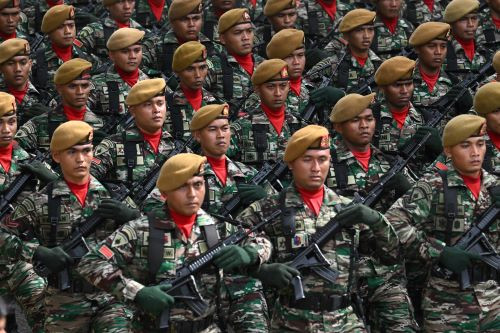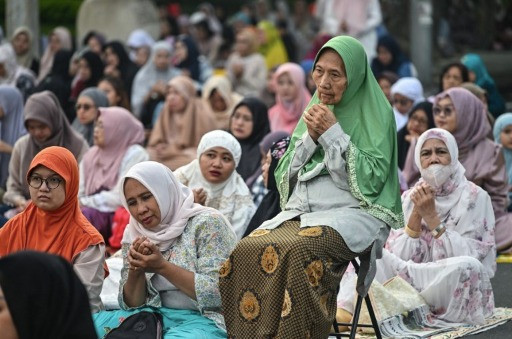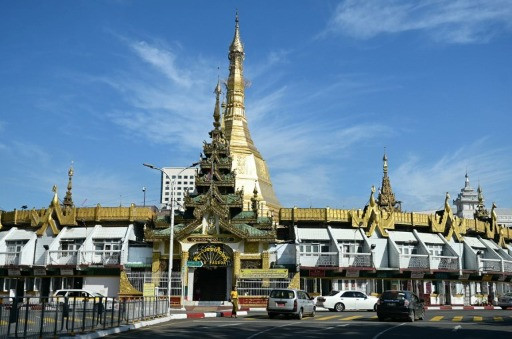Taking lessons from 2015 forest fire disaster
The devastating forest fires four years ago, the worst in two decades, still loom over the conscience of the government after the Supreme Court on July 16 rejected an appeal filed by President Joko “Jokowi” Widodo against a lower court ruling that found his government guilty of failing to prevent the forest fires.
Change Size
 Burning peatland is seen in Palangkaraya, Central Kalimantan. Uncontrolled peat fires can spread for kilometers underground and by air, causing a deadly smog. In 2015, this resulted in one of the greatest environmental disasters of the 21st century. (JP/Björn Vaughn)
Burning peatland is seen in Palangkaraya, Central Kalimantan. Uncontrolled peat fires can spread for kilometers underground and by air, causing a deadly smog. In 2015, this resulted in one of the greatest environmental disasters of the 21st century. (JP/Björn Vaughn)
T
he ghost of the 2015 forest and land fires, which raged through 2.6 million hectares in Sumatra and Kalimantan and cost the country more than US$16 billion, is haunting us now that the Meteorology, Climatology and Geophysics Agency (BMKG) has forecast a severe drought within the next few months.
The devastating forest fires four years ago, the worst in two decades, still loom over the conscience of the government after the Supreme Court on July 16 rejected an appeal filed by President Joko “Jokowi” Widodo against a lower court ruling that found his government guilty of failing to prevent the forest fires. The citizen lawsuit was brought against the government in 2016.
The court also ordered the government to review the permits of companies of which plantation concessions burned, create a road map for forest fire mitigation and emergency handling and make a compensation plan for fire victims.
Although meteorologists do not foresee this year’s El Niño to be as severe as the one in 2015, prolonged drought could still dry out vegetation, providing highly combustible fuel for fires, allowing them to spread faster and farther.
Fortunately, the specter of the man-made disaster in 2015 seemed to have led the central government, local administrations, big plantation companies and local people to a steely determination to cooperate in fire prevention, detection and mitigation.
The government on its part has enacted key policy changes to avoid another emergency of the magnitude of the 2015 fires. Tougher rules have been enforced, such as requiring plantation firms to restore degraded peatland.
The President slapped a three-year moratorium on new oil palm development and mandated the review of existing licenses to minimize further expansion of palm plantations.
How about Asia Pulp and Paper (APP), the country’s largest producer, and Riau Andalan Pulp and Paper (RAPP), the second-largest, which were alleged to have been among the main culprits behind the 2015 fire disaster?
The two companies, which together with their suppliers manage millions of hectares of pulpwood estates, notably those in fire-prone peatland areas in Riau and South Sumatra, seem to have taken great lessons from the disaster.
They started developing integrated fire management systems immediately after the massive fires in 2015, involving the procurement of equipment and technology and the training of fire-fighting personnel and cooperation with local governments and the communities.
Riau and South Sumatra were the hardest hit in the 2015 fires.
The awareness and alertness, besides friendly weather, contributed to the fact that there have been no major forest and land fires over the past three years, especially during the most crucial time last August when Jakarta and South Sumatra cohosted the Asian Games. About 15,000 athletes from 45 countries and hundreds of thousands of spectators from across the continent visited the two cities for the Games.
“We took great lessons from the 2015 fire disaster and have since invested more than $100 million in developing our fire-management system,” said Suhendra Wiriadinata, director of APP, a subsidiary of the Sinar Mas group, which holds millions of hectares of land concessions for pulpwood and oil palm plantations in Sumatra and Kalimantan.
Wiriadinata said APP had set up a remote sensing system, trained 3,000 fire-fighting personnel, set up 506 fire monitoring posts, 100 fire towers, procured 138 fire engines, 608 ground patrol vehicles, 10 water bombing helicopters and installed more than 1,000 water pumps.
RAPP has also steadily strengthened its fire management system since late 2015, spending millions of dollars on procuring equipment and technology and establishing fire detection, monitoring camps, cameras and weather stations.
RAPP forest protection and conservation manager Sailal Arimi says the company uses advanced satellite hot spot monitoring from two NASA-based systems and MODIS satellites, has installed more than 140 monitoring and lookout towers and operates helicopters, airboats, almost 500 water pumps and employs a rapid response team with almost 1,000 well-trained fire-fighters.
RAPP is a subsidiary of the Asia Pacific Resources International Holding (APRIL), which holds or manages millions of hectares of land concessions for oil palm and pulpwood estates in Sumatra and Kalimantan.
APP and RAPP together account for more than 80 percent of Indonesia annual pulp and paper output of 8.5 million tons and 12.5 million tons, respectively.
Certainly, the huge expenditures for fire management simply makes sense to ensure their own business survival because they depend mainly on fast-growing trees for their pulp materials. However, both Wiriadinata and Arimi have acknowledged they cannot simply erect “walls” around their concessions by installing fire monitoring, detecting and extinguishing equipment and maintaining their own fire-fighting-response teams.
Both plantation groups are aware that their fire prevention programs will never be entirely effective without good cooperation with local administrations and people. It’s because historically, forest fires during the dry season are usually caused by a combination of several factors: the slash-and-burn method for subsistence farming, land clearing for plantations, underground peat fires and accidental fires related to daily habits of the people, such as throwing away live cigarette butts and untended cooking stoves.
The companies’ fire management systems therefore have from the outset included the education and empowerment of the communities living around their concession areas.
APP's Fire-Aware Village Community empowerment program and RAPP's Fire Free Village program help local people cultivate horticulture and food crops by providing them with seeds, farming tools, extension services and marketing their produce and nurture their awareness of the damage of forest and land fires.
“Keeping a close eye on fire and deforestation alerts in the 2019 season will be a good indicator of the effectiveness of policies enacted since 2015, but it’s not the only one,” Andika Putraditama, World Resources Institute (WRI) Indonesia sustainable commodities and business manager, notes.
Since higher palm oil prices tend to drive agricultural expansion, the true test of government and industry commitment to forest protection will come when the palm oil price bounces back and economic pressures coincide with another hot, dry El Niño year, Putraditama says.
Arie Rompas, Greenpeace Indonesia forest campaigner team leader, concurs that the country is now in a climate emergency, so ”we need to see them making maximum effort. If APP and RAPP, along with cooperation and coordination with local government, were rewetting and rehabilitating the peatland this would greatly reduce the risk of the hugely damaging peatland fires.”
“But we will look to see what the companies are doing together with other people in the landscape to improve their prevention activities. We consider that APP and APRIL's fire prevention efforts have not been thoroughly tested since 2015 because there is no significant dry period and high fire risk,” Arie adds.
***
The writer is senior editor at The Jakarta Post.










